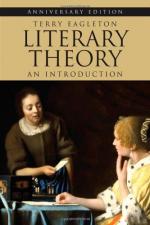|
This section contains 1,725 words (approx. 5 pages at 400 words per page) |

|
Chapter 3, Structuralism and Semiotics Summary and Analysis
While New American Criticism was able to attain some respect from academic institutions, as the North grew increasingly materialistic and scientific, its inexact methods excluded it from being considered a serious discipline. Northrop Frye, a Canadian theorist, attempted to correct this by combining the essence of New American Criticism—particularly, its formalist insistence on focusing on only the text itself—with a systematic, almost scientific methodology. He did this by claiming that through literary history, the same basic patterns and categories continually repeat themselves, and the literary critic can analyze literature simply be analyzing the categories into which a work falls. Frye also extended the formalism that was present in New American Criticism. While the New Critics were willing to allow that literature could convey something about the world, Frye was insistent that...
(read more from the Chapter 3, Structuralism and Semiotics Summary)
|
This section contains 1,725 words (approx. 5 pages at 400 words per page) |

|




